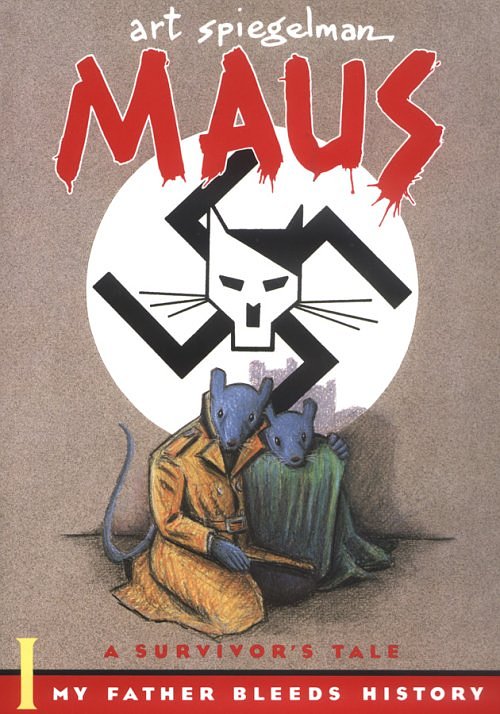
Recently, I read the first book of the series, Maus. Maus is a true story about the author getting his father to reveal his life to him so he may write a comic book about. This comic book is what became Maus.
In this book, the Jewish people who wear discriminated against were mice, while the Nazis were cats. I think this is really interesting to look at from that point of view, since cats are supposed to eat and attack and sorta of HATE mice. Like Tom and Jerry.
It seems like I enjoy stories with bad situations. For instance, earlier this school year, i read Emil and Karl (I have a blog post about it). They are both about World War II and living through it while being persecuted, although in Maus the author's father is a grown man and Emil and Karl is about two young boys.
Recently, I found out what a swastika is, and I realized just a moment ago that it's in the middle of the emblem on the book, with the skull- cat head. (I believe it is a skull...?) When I looked it up (on Wikipedia, I know, I'm TERRIBLE...) (Oh wait this is Wiktionary... whatever...) it shows up with three languages (I don't know how to explain it... here's the site... http://en.wiktionary.org/wiki/%E5%8D%90 ) and they're all from Asian countries. I THEN looked it up on Wikipedia and it says
"The swastika (Sanskrit: स्वास्तिक) is an equilateral cross with its arms bent at right angles, in either right-facing (卐) form or its mirrored left-facing (卍) form. Earliest archaeological evidence of swastika-shaped ornaments dates back to the Indus Valley Civilization of Ancient India as well as Classical Antiquity. It remains widely used in Eastern religions, specifically in Hinduism, Buddhism and Jainism. Following a brief surge of popularity in Western culture, the swastika from the 1930s became strongly associated with its iconic usage by Nazi Germany, and it has hence become stigmatized and taboo in the Western world; it has notably been outlawed in Germany if used as a symbol of Nazism. Many modern political extremists and Neo-Nazi groups such as Afrikaner Weerstandsbeweging and Russian National Unity use stylised swastikas or similar symbols."
So I know it symbolized Nazis, but I still don't really understand what it has to do with Buddhism and Hinduism. I suppose I will have to research more about it...
What would be interesting is for you to explore *why* you find yourself drawn to WW2 stories. What compels you?
ReplyDelete